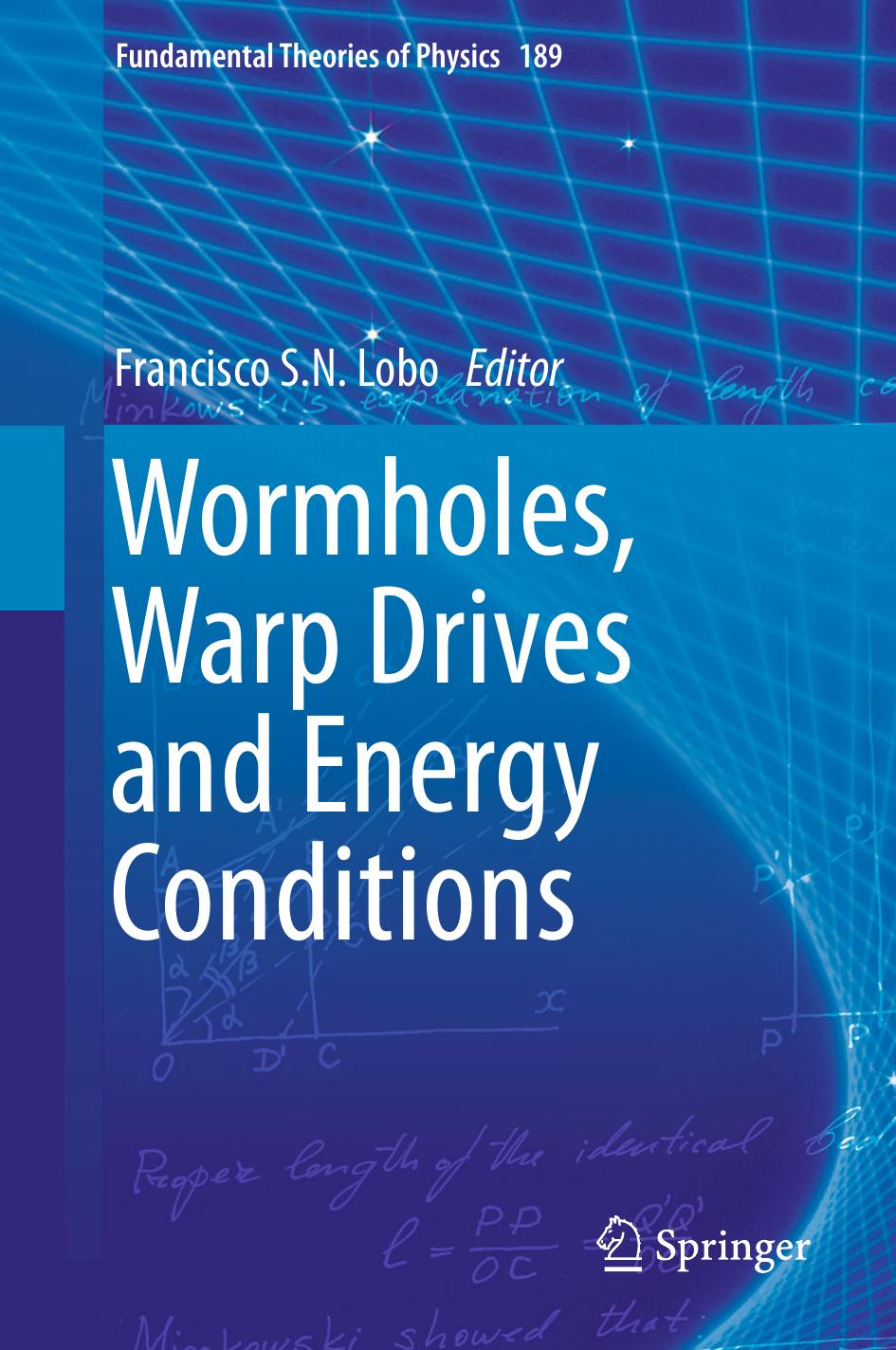Wormholes, Warp Drives and Energy Conditions by Francisco S. N. Lobo

Author:Francisco S. N. Lobo
Language: eng
Format: epub, pdf
Publisher: Springer International Publishing, Cham
Diego Rubiera-Garcia
Email: [email protected]
8.1 Introduction
Einstein’s deep insight on the nature of gravitation had a crucial impact on our understanding of the universe. In order to make gravitation compatible with his new principle of relativity, the rigid Minkowskian spacetime had to be extended to a locally deformable dynamical structure using the language of differential geometry. The description of spacetime as a field theory of a metric tensor in interaction with the matter led to a number of important predictions, some of which were observationally verified shortly after the publication of the theory. Among those, of particular relevance are the orbital properties of point-like particles around a central object (see [1, 2] for some recent reviews on the current experimental status of General Relativity ).
Though the notion of point particles was very successful for the development and observational verification of the theory, their presence in a field theory of the metric leads to severe conceptual problems and technical inconsistencies. In particular, massive point particles should be seen as black holes or naked singularities, implying an ill definition of the metric at their location and an inherent difficulty in the use of perturbative methods for their description. In order to overcome this situation, Wheeler [3] addressed the notion of point particle from a field theory perspective introducing the concept of geon, abbreviation for “gravitational-electromagnetic entity,” in an attempt to describe extended bodies as long-lived excitations of self-gravitating fields.
The first examples of geons that Wheeler considered were toroidal distributions of electromagnetic waves and spherical balls of light [3]. The combination of these ideas with the fact that Einstein’s gravity only determines the local aspects of the gravitational field (the geometry) but does not restrict in any way its global properties (topology) soon led to the consideration of wormholes as mathematically admissible entities which could play a relevant role in combining gravitation with other branches of Physics (for a detailed account on the nature and properties of wormholes see [4]). In fact, Misner and Wheeler found [5] that free (sourceless) electric fields flowing through holes in the spacetime topology could engender pairs of massive particles with opposite charges. Those charges would be similar in all respects to elementary point particles, satisfying their own conservation laws , but without being associated to any mass or charge density. This is known as the mass-without mass and charge-without charge mechanisms.
Though within the framework of general relativity (GR) the electrically charged geons with wormhole structure envisioned by Misner and Wheeler are not possible [6, 7], they turn out to be rather common solutions in certain extensions of the theory. The main purpose of this chapter is thus to provide an overview of the results obtained in this context over the last 5 years or so.
Our starting point will be the consideration of gravitation as a geometric phenomenon, and geometry as something else than a mere theory of metrics. By working in a metric -affine geometric scenario, i.e., recognizing that metric and connection are logically and mathematically independent entities (see [8,
Download
Wormholes, Warp Drives and Energy Conditions by Francisco S. N. Lobo.pdf
This site does not store any files on its server. We only index and link to content provided by other sites. Please contact the content providers to delete copyright contents if any and email us, we'll remove relevant links or contents immediately.
| Aeronautics & Astronautics | Astronomy |
| Astrophysics & Space Science | Comets, Meteors & Asteroids |
| Cosmology | Mars |
| Solar System | Star-Gazing |
| Telescopes | UFOs |
Tools of Titans by Timothy Ferriss(8218)
Turbulence by E. J. Noyes(7936)
Secrets of Antigravity Propulsion: Tesla, UFOs, and Classified Aerospace Technology by Ph.D. Paul A. Laviolette(5309)
Astrophysics for People in a Hurry by Neil DeGrasse Tyson(5133)
Room 212 by Kate Stewart(5037)
Design of Trajectory Optimization Approach for Space Maneuver Vehicle Skip Entry Problems by Runqi Chai & Al Savvaris & Antonios Tsourdos & Senchun Chai(5011)
Pale Blue Dot by Carl Sagan(4912)
The David Icke Guide to the Global Conspiracy (and how to end it) by David Icke(4625)
A Journey Through Divination and Astronomy by Publishing Pottermore(4344)
Goodbye Paradise(3727)
Apollo 8 by Jeffrey Kluger(3637)
COSMOS by Carl Sagan(3554)
Losing the Nobel Prize by Brian Keating(3499)
The Five People You Meet in Heaven by Mitch Albom(3475)
How to Read Water: Clues and Patterns from Puddles to the Sea (Natural Navigation) by Tristan Gooley(3408)
Brief Answers to the Big Questions by Stephen Hawking(3369)
How to Read Nature by Tristan Gooley(3249)
The Order of Time by Carlo Rovelli(3145)
A Brief History of Time by Stephen Hawking(2960)
